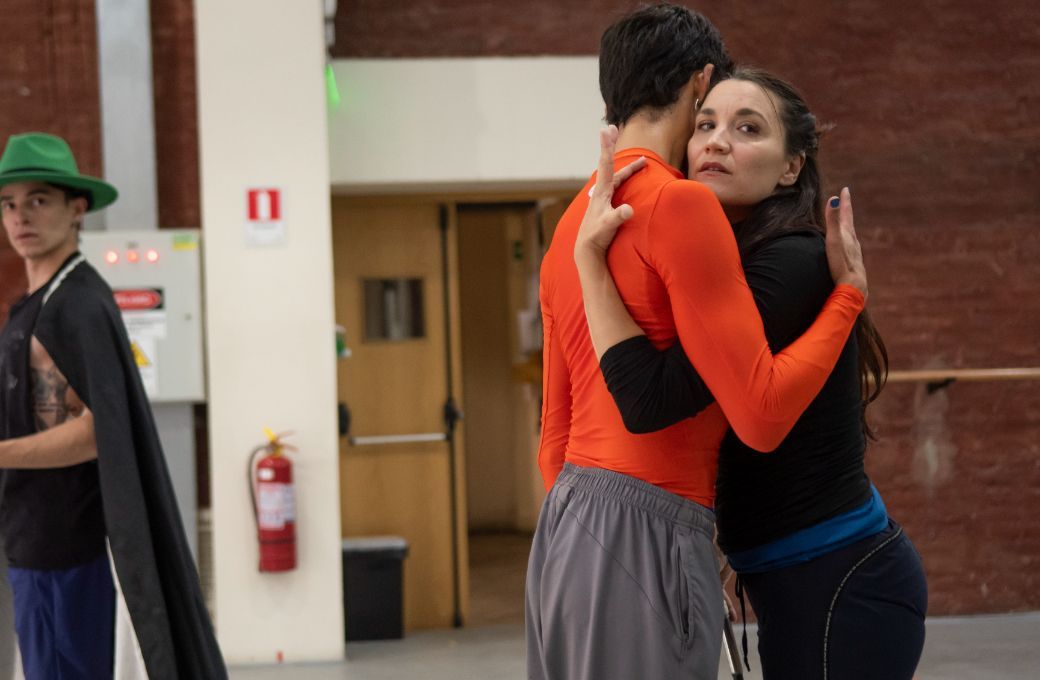The choreographer Bronislava Nijinska (1891–1972) was the sister of legendary dancer Vaslav Nijinsky – both achieving fame through Diaghilev’s Ballets Russes. In 2022, Lynn Garafola’s biography La Nijinska: Choreographer of the Modern brought a welcome renewal of attention to Nijinska. This year, one of her most famous works, Les Noces, celebrates its centenary in June – companies across the world, such as Cathy Marston’s Ballett Zürich and Adam Sklute’s Ballet West in Salt Lake City, are re-staging it. An abstract depiction of a Russian peasant wedding, it is set to a challenging score by Stravinsky, written for four pianos and a battery of percussion, with complex Russian-language choral writing throughout.
The life of Nijinska herself will also be depicted this year in a full-length ballet in Chile: Nijinska, Secreto de la Vanguardia (Nijinska, Secret of the Avant-Garde), a commission for Spanish choreographer Avatâra Ayuso by Ballet de Santiago, which premieres at Teatro Municipal in July. Coincidentally, Garafola and Ayuso were researching their work on Nijinska almost in parallel. In spite of a long career, she stayed relatively and unjustly overlooked in ballet history, but between them, choreographer and biographer have rescued Nijinska’s contribution to neoclassical ballet – and more importantly, highlighted the role of women in dance.
When I meet Avatâra Ayuso on the terrace of the Royal Opera House, she jokingly tells me that Garafola had saved her a few years of research. Excited about the creation of this two-act, six-scene ballet, she confesses her worries. “I only have four weeks to mount it in Chile and I don’t know the company well.” On her laptop, she shows me some beautiful costume designs by Jorge “Chino” Gonzalez, who also is responsible for a functional set with moving modules. “It takes place inside a studio, as Nijinska was at her happiest there. And the costumes are all abstract, with elements which help define the characters: a hat and walking stick for Diaghilev, an exuberant head piece for Marquis de Cuevas, a silky robe for Vaslav.”
Ayuso, who has been working in the UK for 18 years, is an accomplished dance professional and has performed internationally for William Forsythe, Wayne McGregor, Frédéric Flamand and Angelin Preljocaj. She studied dance in Spain, Germany and the UK, obtaining various degrees on the subject, and also has an academic degree in leadership.
A curious, methodical and indefatigable researcher of movement, she is a charismatic leader who has made a case for advancing women in the dance sector through various initiatives, such as her own foundation AWA Dance (Advancing Women’s Aspirations with Dance).
Ayuso’s group, the similarly-named AVA Dance Company, was founded in 2008, now based in Birmingham, with three motivations: artistic collaboration, overcoming eurocentrism to include other cultures in movement research, and in her words, “to empower the female body on stage so women can use their hips and curves to lead men, as men lead women, bringing independence.” Ayuso defines her choreographic style as, “dynamic, physical; I like to think it’s sophisticated and difficult to box. I don’t like to set boundaries in dance.”
I wonder what the starting point was to make a ballet about Nijinska. She says, “I discovered that she was a woman who changed the dance sector. She was frustrated with her professional life, greatly affected by the misogynist behaviours in dance at that time (1920s through to the 1950s). This motivated me to investigate and I realised she needed to be celebrated. It had to be this year because of the centenary of Les Noces. It’s a kind of proto-feminist work as it puts the female role – her dance technique and her resilience – at the forefront. It was a must to bring Nijinska back, to give her justice historically.”
It was Nijinska who introduced the idea of abstract ballet. “She was the first to collaborate with Pablo Picasso, Natalia Goncharova, Cocó Chanel. She inspired choreographers such as George Balanchine and Frederic Ashton.”
Being a contemporary choreographer, Ayuso often works in an abstract way, but this time the ballet needed to tell a story. She worked with dramaturg Ignacio Vleming and found there was plenty of material. A woman of character, forward thinking, hard-working, Bronislava Nijinska relied on women throughout her life as friends and muses. She married twice and had two children. The experience of the Russian Revolution, and with it the flourishing of the Russian avant-garde, greatly affected her work. She paved the way for neo-classical ballet with her research into new possibilities within classical movement.
“The ballet covers 40 years of Nijinska’s life,” continues Ayuso. “We selected those moments where there is dramatic tension, and thought about how to help the audience move from something literal to something abstract. The first part is more narrative, the second, more abstract.”
Ayuso thinks the only reason Nijinska was forgotten, “is the patriarchal structure and misogynistic culture of the dance sector.” Nijinska created a huge body of work, more than 60 ballets for a dozen international companies in Poland, Russia, Ukraine, France, Argentina and the US, where she died. She adds, “I chose Nijinska because I also identify with her. We are both staunch fighters; committed to our life values; we empower women on stage; have multiple international engagements and we are not afraid of saying no.”
I want to know if the world has moved on for women in dance in the one hundred years since Les Noces? “We have evolved, but not enough. There is a lot of work to do, not only in programming women – but also, we need training to overcome unconscious bias. Some of us are reproducing patterns we have inherited, and we need to do some work to reflect on why we are perpetuating them. There is still a lack of opportunities for women artists. The training women receive is changing for the better, but they still receive comments about their bodies. Those that are still called girls in the studio in a professional company are women,” she reflects.
“Through my AWA Dance foundation I realised that women in the dance sector find it extremely difficult to associate themselves with the word ‘leader’. The way we see leadership, doesn’t connect with who we are, rejecting completely that position, that thinking. We need to speak up more and to start realising that we have the authority and should be comfortable with the word leader.”
Ayuso reveals it has been difficult and frustrating to work as a choreographer in the UK, though she is very grateful to the Arts Council. “Through them I’ve been able to do my work with my independent company. But it hasn’t been programmed in the last three years in the UK. I am frustrated about how the sector has not given me opportunities that I know I deserve and for which I am ready.”
Critics in the UK have described Ayuso as, “one of the most creative thinkers in modern dance today” (Graham Watts); “firecracker talent, her work is hectic and explosive” (Luke Jennings); or “a committed feminist, she is one of a new generation of women determined to push female creativity to the forefront of dance” (Teresa Guerreiro). She has been nominated twice for a National Dance Award. Yet we often hear her name in relation to smaller projects or ballet schools, such as Birmingham’s Elmhurst School, for whose graduates she choreographed a short piece Bronislava, performed in London recently.
I ask if this earlier work acted as forerunner for the full-length ballet in Santiago. “The part that I explored with Elmhurst students was the young Nijinska, for the first act of the ballet. I knew I would be working with dancers of her age. Bronislava was a fierce and sophisticated dancer, a good jumper like her brother, with big energy. I also started to understand the development of the characters of Diaghilev and Nijinsky with these students.”
In Nijinska, Secreto de la Vanguardia, Ayuso will use a generally classical style, using pointe shoes – but she is mainly a contemporary choreographer, and the dance will be inflected with modern stylistic touches learned from interviewing many people who worked with Nijinska in the studio. “People such as Dame Monica Mason and Christopher Newton and others who are now in their 80s or 90s, remembered her gestures, body language, mannerisms and personality. I wanted to develop Nijinska’s character in a truthful way.” Like Nijinska herself, there are many sides to Ayuso’s choreographic vocabulary.
The arrangement of the score is by musical director Pedro Pablo Prudencio. They both agreed to use scores Nijinska worked with, from Sergei Prokofiev to Maurice Ravel, Manuel de Falla to Argentine composer Constantino Gaito, and also Claude Debussy’s Prélude à l’après-midi d’un faune, “because despite it being her brother’s choreography, Vaslav moulded the movements on Bronislava”.
We meet again after her first trip to Chile. The company is going through a difficult time, after the sudden departure of its director Luis Ortigoza. “It’s been a painful situation for them although the dancers and the union have pushed for this change... I told them to come to me if there are any issues and we’ll find a solution. This first approach was to get to know them more as human beings as well, which helped us to connect. In terms of movement, they told me it was challenging, but they loved spending time in the studio with me,” she says proudly.

Ayuso went even further involving the dancers in the decision to have all 46 of them performing, without understudies, for which they voted democratically. A brave, if somewhat risky move. I wondered what she expects after Nijinska, Secreto de la Vanguardia has premiered. “For me, I hope this ballet shows the people who are the decision-makers that I deserve opportunities with larger companies, that I can handle big productions. If they need proof, this will provide it.”
And for the rest of her year, there are plans to take Nijinska on tour, to teach and most importantly, curate a series of events in the UK to celebrate Nijinska’s legacy. I suddenly remember that Nijinska insisted Diaghilev hired her as a choreographer at one point. I start thinking how much of Bronislava I see in Avatâra.
Avatâra Ayuso’s Nijinska, Secreto de la Vanguardia runs at Ballet de Santiago from 22nd–29th July.
See a collection of photographs, choreographic notes and letters from Bronislava Nijinska at the Library of Congress.


